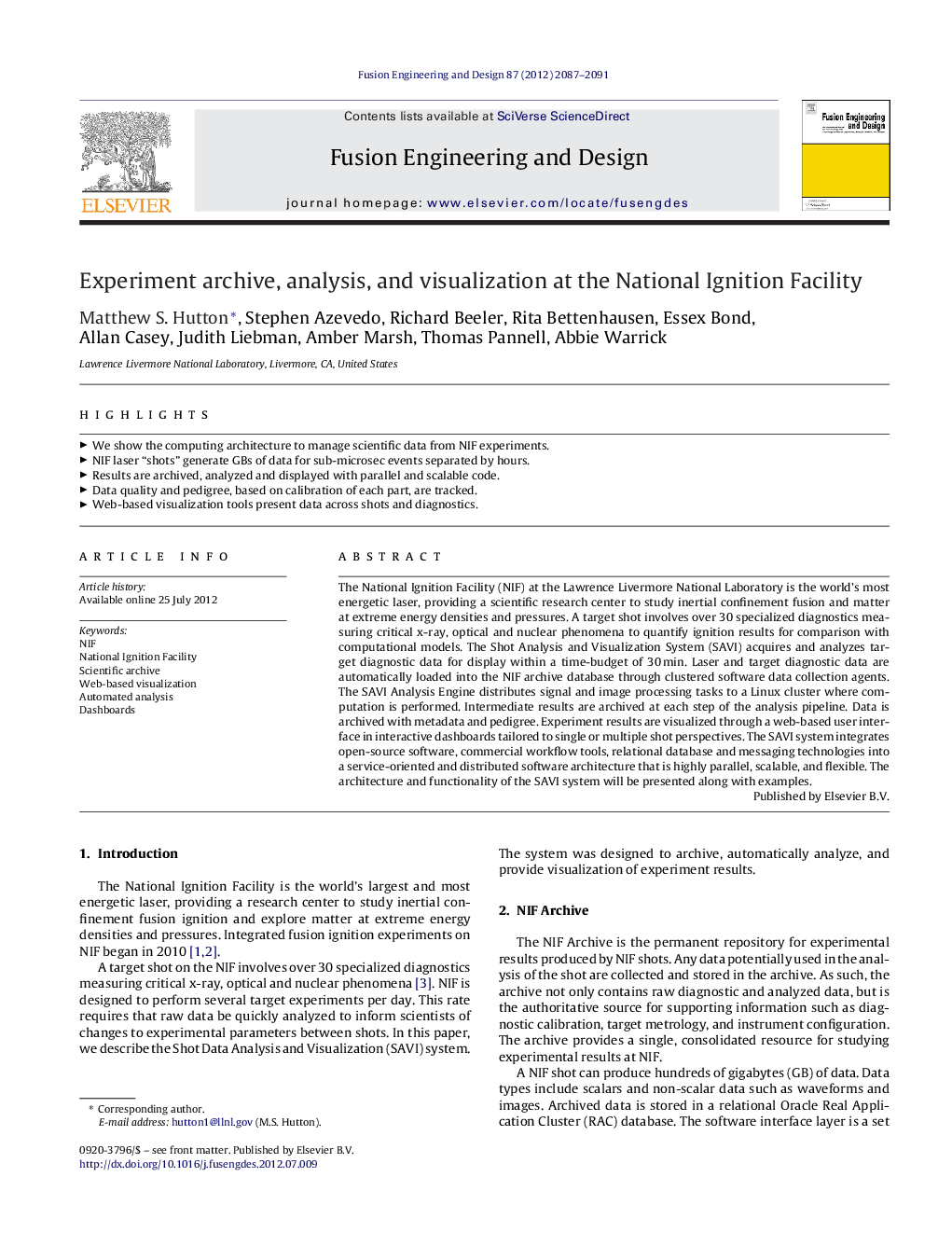| کد مقاله | کد نشریه | سال انتشار | مقاله انگلیسی | نسخه تمام متن |
|---|---|---|---|---|
| 271329 | 504992 | 2012 | 5 صفحه PDF | دانلود رایگان |

The National Ignition Facility (NIF) at the Lawrence Livermore National Laboratory is the world's most energetic laser, providing a scientific research center to study inertial confinement fusion and matter at extreme energy densities and pressures. A target shot involves over 30 specialized diagnostics measuring critical x-ray, optical and nuclear phenomena to quantify ignition results for comparison with computational models. The Shot Analysis and Visualization System (SAVI) acquires and analyzes target diagnostic data for display within a time-budget of 30 min. Laser and target diagnostic data are automatically loaded into the NIF archive database through clustered software data collection agents. The SAVI Analysis Engine distributes signal and image processing tasks to a Linux cluster where computation is performed. Intermediate results are archived at each step of the analysis pipeline. Data is archived with metadata and pedigree. Experiment results are visualized through a web-based user interface in interactive dashboards tailored to single or multiple shot perspectives. The SAVI system integrates open-source software, commercial workflow tools, relational database and messaging technologies into a service-oriented and distributed software architecture that is highly parallel, scalable, and flexible. The architecture and functionality of the SAVI system will be presented along with examples.
► We show the computing architecture to manage scientific data from NIF experiments.
► NIF laser “shots” generate GBs of data for sub-microsec events separated by hours.
► Results are archived, analyzed and displayed with parallel and scalable code.
► Data quality and pedigree, based on calibration of each part, are tracked.
► Web-based visualization tools present data across shots and diagnostics.
Journal: Fusion Engineering and Design - Volume 87, Issue 12, December 2012, Pages 2087–2091